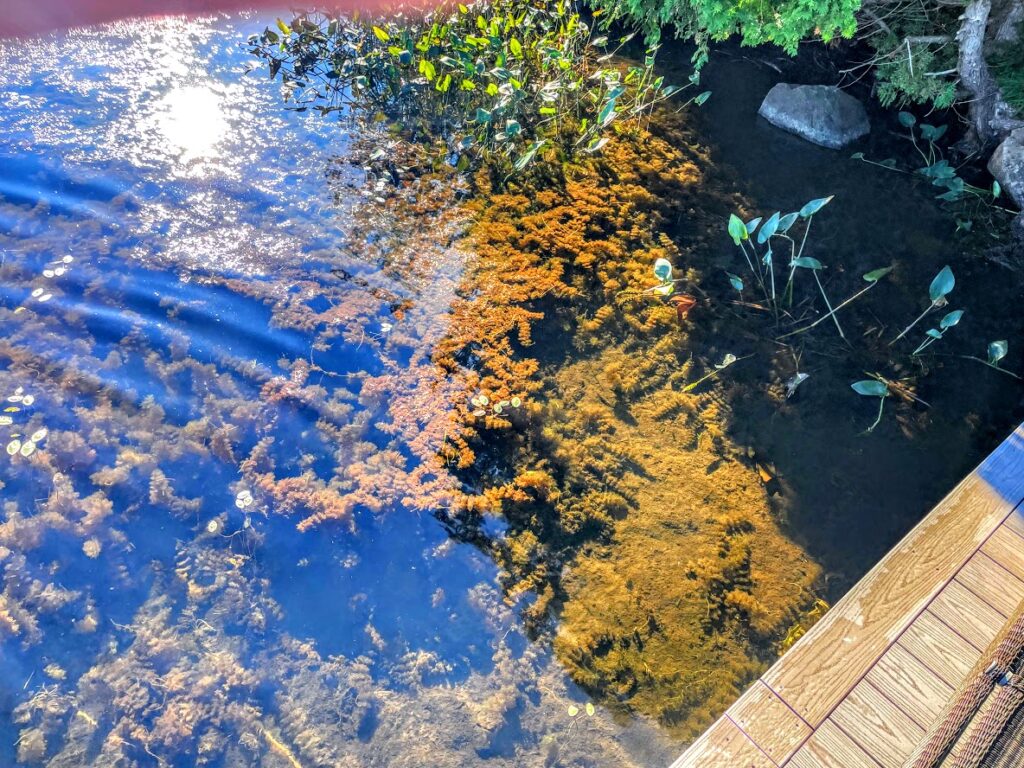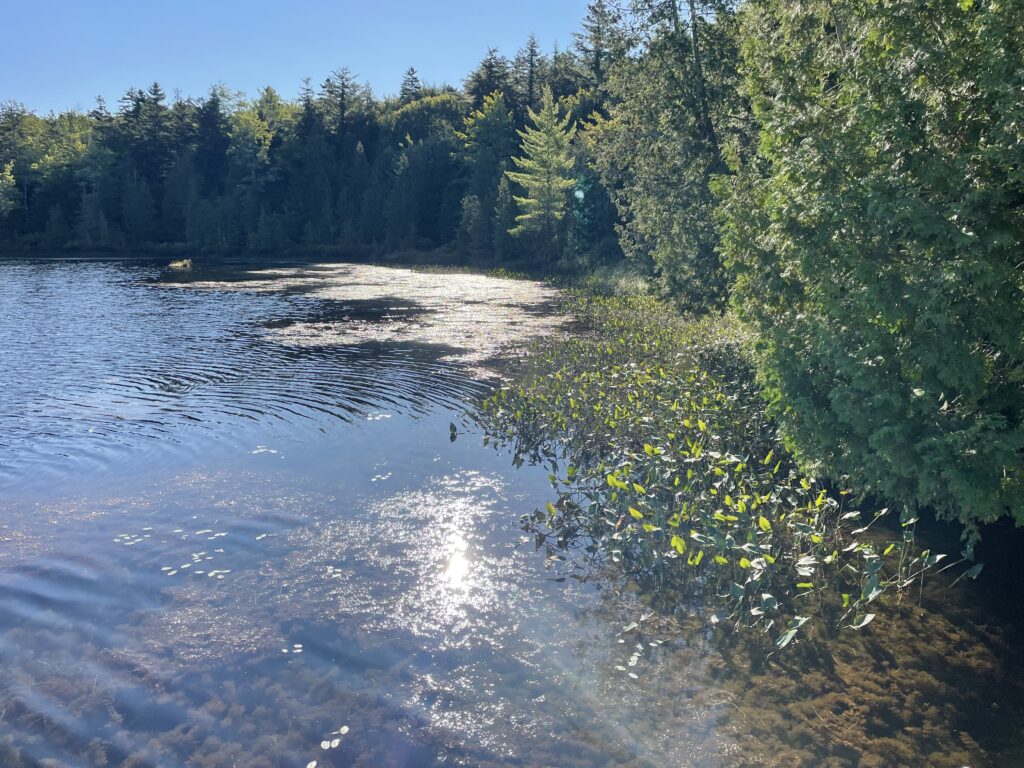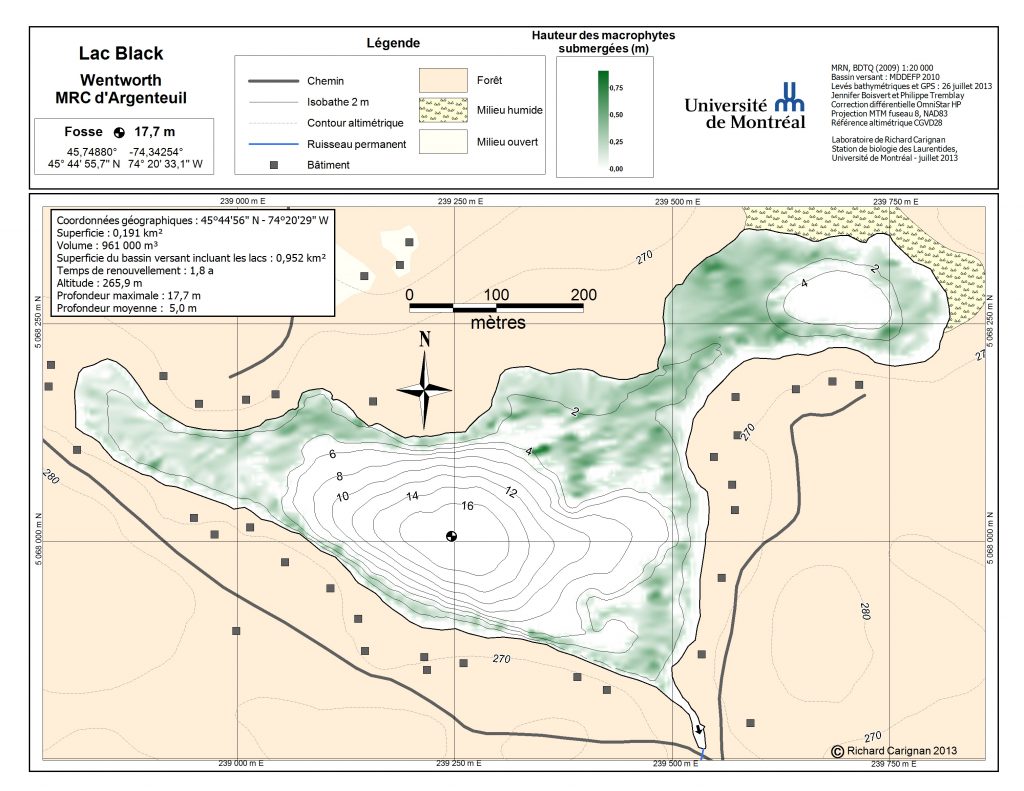You have probably heard talk about the Purple Bladderwort (Utricularia Purpurea) in Black Lake. It is a carnivorous plant found in many places in the Eastern part of North America, but only in a very few lakes in the Laurentians. When abundant it can be bothersome but it is otherwise harmless.
This 2,5 minute underwater video was shot in June 2015 in the far east section of Black Lake last summer. The author is none other than Dr. Richard Carignan, Quebec’s foremost lake expert. He is also an active member of the GRIL (Group for Interuniversity Research in Limnology and Aquatic Environment)
He has identified in French the plants seen in the video. I am providing you here with the appropriate English names. First, in order of appearance, is la (Vallisnérie américaine, (Vallisneria Americana), Brasénie de Schreber, (Schreber Watershield), Potamot à large feuilles, (Large-Leaved Pondweed) then lots of Purple Bladderwort. Finally, a composite of the latter, plus vallisnérie américaine (Tapegrass) and some potamot émergé (Ribbonleaf Pondweed). All of these plants, except the Purple Bladderwort, are common in all our lakes.
Dr Carignan’s advice: do nothing. One can easily do more harm than good.
We do not know how long the Bladderwort has been living in Black lake. I arrived here in 1996 and I remember hearing about this phenomenon around that period.
Strangely, a survey of aquatic plants* on the lake produced by Vanier College in 1982 has no mention of that plant on it’s list of aquatic plants. As as this map shows, there were a lot of aquatic plants on Black Lake when this map was done in 2013.
There was still a lot of Purple Bladderwort in the following years. It was assumed that there were less abundant when water levels were high. But, in 2018, that theory went underwater as the area that previously covered the eastern part of the lake shrank dramatically, roughly by 2/3, even with the low water levels during this beautiful hot summer!

The following map was produced in 2013 and, as you can observe, plants – mostly purple bladderwort – cover a significant part of the lake, mostly in the bay in the eastern section of the lake. The situation changed dramatically in 2019 when the purple bladder wort cover was reduced by 40 to 50% and again by 80 % in 2020. And in 2021, only about 10% of the original coverage was left. The following year, in 2022, an increase in the coverage of roughly about 20% of the original coverage was observed. And then, in 2024, the coverage expanded considerably. In 2025, the coverage is less significant but more inconvenient for residents as shown in this photo taken in early September.
Little is know about this plant. Very little research has been punished even though there is an organization called the International Carnivorous Plants Society. There is little about the plant.
My research leads me to the following conclusion:
- Climate is the main driver of the changes we have observed, especially temperature and humidity.
- Warmer water combined with high humidity, especially heavy rainfalls, are driving the expansion of the plant.
- Evidently, the opposite is true: colder water combined with drought will have the opposite effect.
Bottom line: we are looking at a cyclical phenomenon driven by the weather. Temperature, rainfall, and seasonal changes impact the growth cycle of bladderworts. Warmer temperatures may enhance their growth, while extreme weather events, such as droughts or floods, can alter their habitats, either promoting or hindering expansion.

It is true that these plants are sometimes a nuisance for some residents of the eastern sector of the lake, there is not really a solution to this problem. The environmental regulations in force require the obtaining of a permit before proceeding with any approach, such as uprooting, to reduce the cover of this herbarium.
To obtain such a license from the Ministry of the Environment, it must be demonstrated beforehand that such a process will not cause more harm than good, and that it will be effective! Which, according to the specialists consulted, is almost impossible to demonstrate.
The best we can do is collect as much information as possible to enhance our knowledge and and share it with the scientific community so as to benefit from their advice.
* A Preliminary Aquatic Survey Boyd and Black Lakes, Quebec. Technical report No. 5a 1982 H.J. Smart D.J. Oxley – Vanier College Fish and Wildlife Technology Program


Hello! I’m inquiring about the cost of membership – what are the annual fees to protect the lakes?